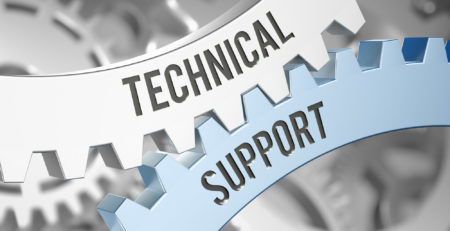Cybersecurity Trends to Watch in 2023: Safeguarding Against Evolving Threats
As technology advances, so do the tactics and techniques employed by cybercriminals. Staying ahead of the curve is crucial for safeguarding sensitive information and maintaining a secure digital environment. In this article, we’ll explore the top cybersecurity trends that demand attention in 2023, empowering you with the knowledge to protect yourself and your organization.
1. Artificial Intelligence (AI)-Powered Attacks
Artificial intelligence is no longer confined to the realm of science fiction; it has become a powerful tool for both cybersecurity defenders and attackers. In 2023, we can expect cybercriminals to leverage AI to launch more sophisticated and automated attacks. By automating tasks such as reconnaissance, vulnerability scanning, and even social engineering, AI-powered attacks pose a significant threat. Organizations must invest in advanced AI-based cybersecurity solutions to detect and respond to these evolving threats effectively.
2. Quantum Computing and Post-Quantum Cryptography
Quantum computing’s advent brings with it the potential to break traditional encryption algorithms that currently secure sensitive data. As quantum computing capabilities improve, so does the urgency to transition to post-quantum cryptography (PQC). In 2023, expect increased efforts in researching and implementing PQC algorithms to safeguard against future threats. Organizations should stay informed and consider adopting quantum-resistant encryption algorithms to future-proof their security infrastructure.
3. Internet of Things (IoT) Vulnerabilities
The proliferation of IoT devices continues to expand, creating a vast attack surface for cybercriminals. In 2023, we anticipate a rise in IoT-related attacks, targeting vulnerabilities in smart home devices, wearables, and industrial IoT systems. Weak default passwords, unpatched software, and insecure communication protocols are common entry points for hackers. Implementing robust security measures such as strong device authentication, secure communication channels, and regular firmware updates will be crucial to mitigate IoT-related risks.
4. Cloud Security Challenges
As businesses increasingly migrate their infrastructure and data to the cloud, the need for robust cloud security practices becomes more critical. In 2023, the focus will be on securing cloud environments against data breaches, misconfigurations, and unauthorized access. Cloud-native security solutions, continuous monitoring, and strict access controls will help organizations protect their valuable assets stored in the cloud.
5. Zero Trust Architecture
Traditional perimeter-based security models are no longer sufficient to combat the evolving threat landscape. Zero Trust Architecture (ZTA) offers an alternative approach, assuming that no user or device should be inherently trusted. Instead, ZTA implements strict access controls, multifactor authentication, and continuous monitoring to verify users’ identities and authorize access. In 2023, organizations should consider adopting ZTA principles to bolster their security posture and protect against advanced persistent threats.
6. Ransomware Attacks and Extortion
Ransomware attacks have witnessed a significant surge in recent years, causing massive disruptions and financial losses. In 2023, ransomware attacks are likely to continue growing in sophistication, targeting critical infrastructure, supply chains, and even Internet of Things (IoT) devices. Organizations should invest in robust backup and recovery mechanisms, employee training, and endpoint security solutions to minimize the impact of ransomware attacks.
7. Privacy Regulations and Compliance
In an era where data breaches and privacy violations dominate headlines, governments and regulatory bodies are enacting stricter data protection laws. The General Data Protection Regulation (GDPR) and the California Consumer Privacy Act (CCPA) are just the beginning. In 2023, organizations will face increasing pressure to comply with stringent data protection regulations. Maintaining data privacy, implementing data protection measures, and conducting regular audits will be essential to avoid penalties and maintain customer trust.
The landscape of cybersecurity continues to evolve rapidly, necessitating proactive measures to stay ahead of emerging threats. In 2023, organizations and individuals must remain vigilant and adopt robust security practices. Artificial intelligence-powered attacks, quantum computing challenges, IoT vulnerabilities, cloud security, zero trust architecture, ransomware threats, and privacy regulations are just some of the trends demanding attention. By embracing these trends and investing in advanced cybersecurity solutions, we can safeguard our digital assets and ensure a secure digital future.











Leave a Reply